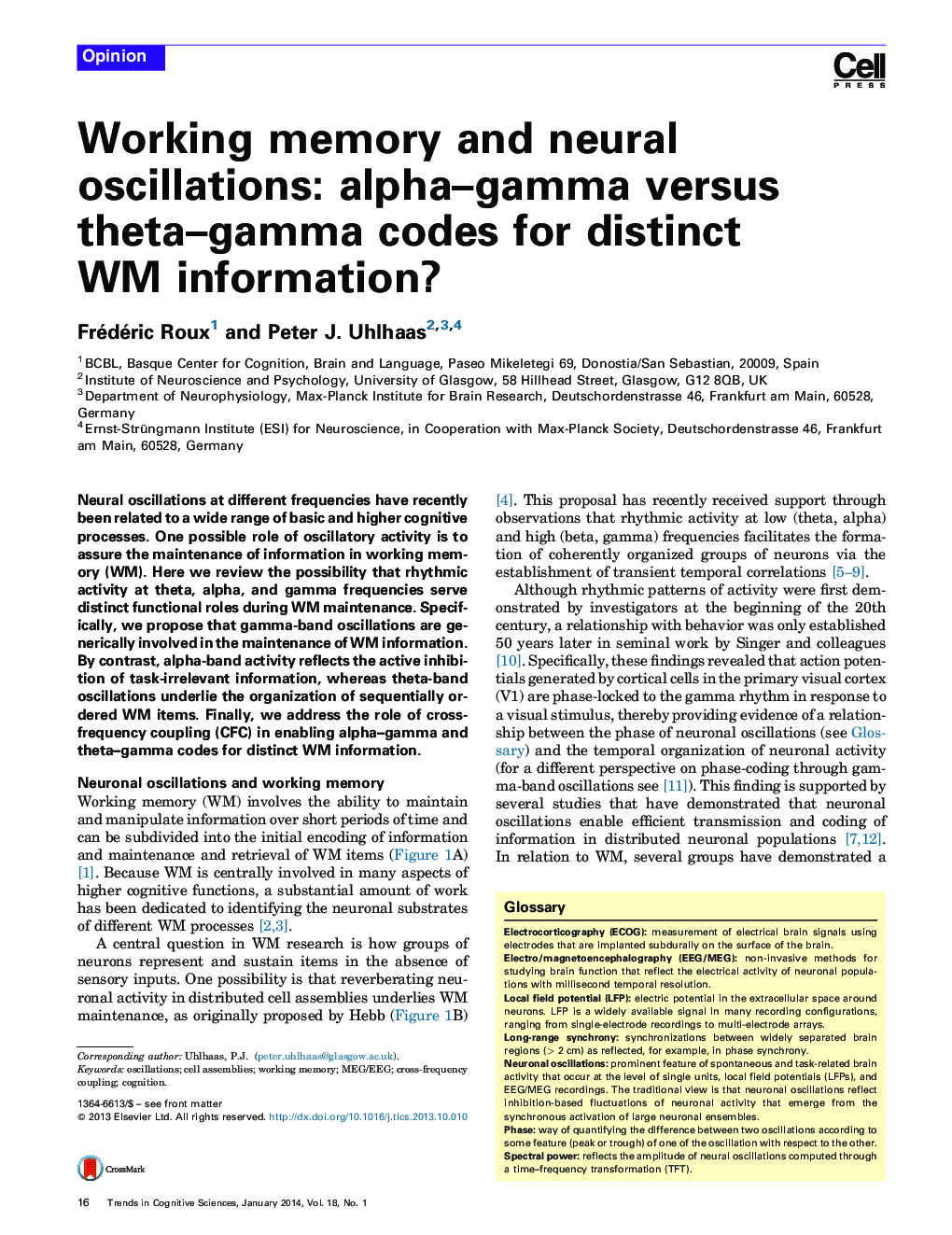| Article ID | Journal | Published Year | Pages | File Type |
|---|---|---|---|---|
| 141442 | Trends in Cognitive Sciences | 2014 | 10 Pages |
•We outline a framework for assigning distinct roles of theta/alpha/gamma-band oscillations to different WM-processes.•Gamma-band oscillations are actively involved in WM-maintenance.•Alpha-band activity underlies the inhibition of task-irrelevant activity.•Theta-band oscillations underlie the temporal organization of WM items.•Through cross-frequency coupling, alpha–gamma versus theta–gamma codes provide distinct mechanisms for different WM information.
Neural oscillations at different frequencies have recently been related to a wide range of basic and higher cognitive processes. One possible role of oscillatory activity is to assure the maintenance of information in working memory (WM). Here we review the possibility that rhythmic activity at theta, alpha, and gamma frequencies serve distinct functional roles during WM maintenance. Specifically, we propose that gamma-band oscillations are generically involved in the maintenance of WM information. By contrast, alpha-band activity reflects the active inhibition of task-irrelevant information, whereas theta-band oscillations underlie the organization of sequentially ordered WM items. Finally, we address the role of cross-frequency coupling (CFC) in enabling alpha–gamma and theta–gamma codes for distinct WM information.
